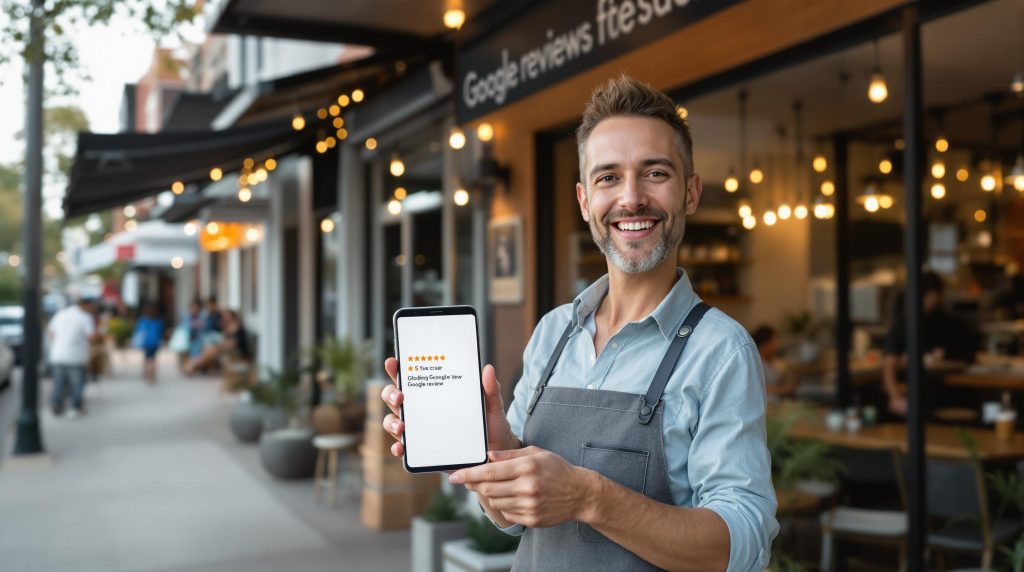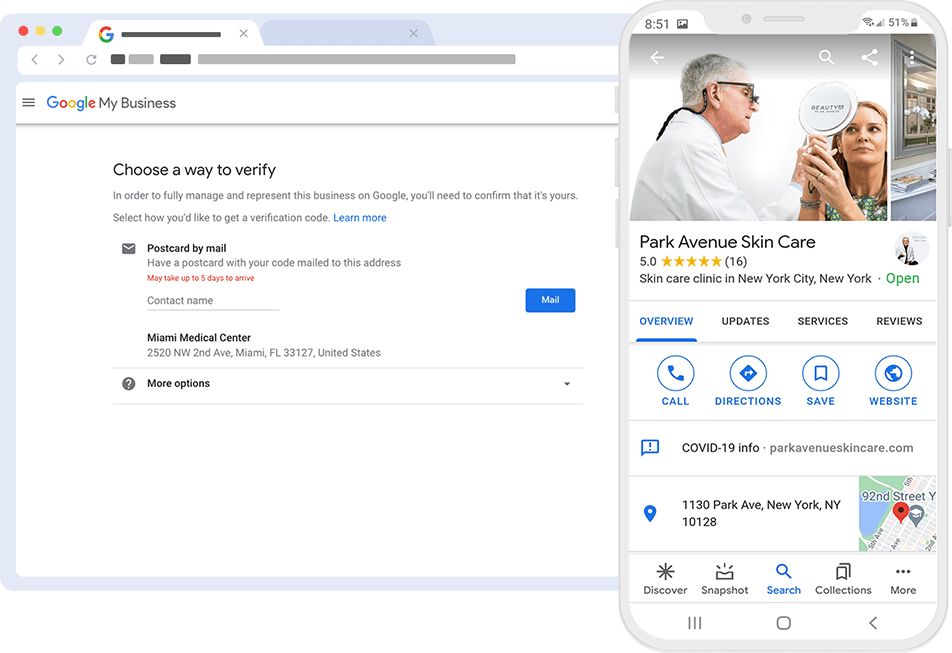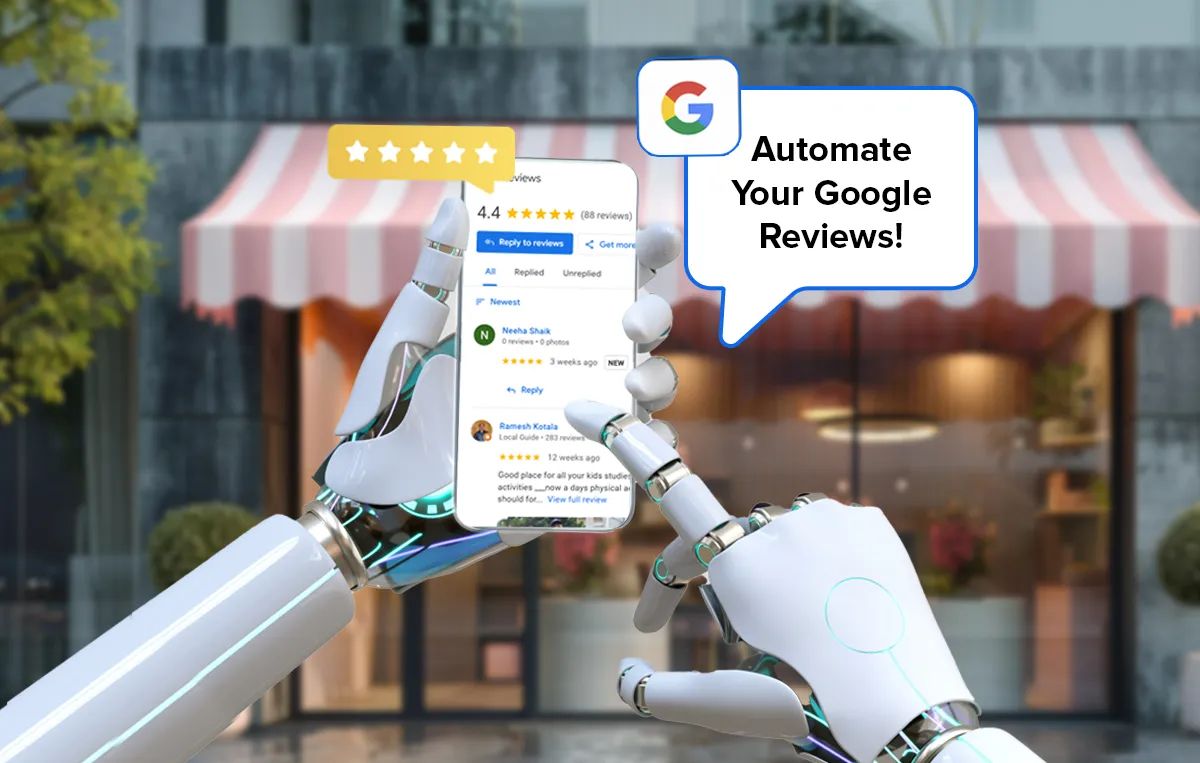How to Get More Google Reviews for Local SEO

Last Updated on 19 October 2025 by Dorian Menard
Getting more Google reviews isn’t just about collecting stars, it’s a core part of building a trusted local presence. From my experience founding Search Scope, I’ve seen firsthand how a steady stream of authentic feedback directly impacts how you show up in local searches and on Google Maps.
You know how crucial word-of-mouth is for Australian businesses. Think of Google reviews as the digital version of that, only amplified. In fact, a 2024 BrightLocal survey showed that 87% of shoppers use Google to evaluate local businesses. That number tells us that your online reputation is often the first, and sometimes only, impression you get to make.
So, let’s break down the practical steps to not only get more Google reviews but to build a system that consistently brings in the kind of feedback that attracts new customers. We’ll cover everything from optimising your profile to making it incredibly simple for your customers to share their experience.
TLDR: Quick Wins to Get More Google Reviews
- Set up and fully verify your Google Business Profile (GBP) to build trust.
- Create a direct review link and use QR codes to make leaving a review effortless.
- Train your team to ask for feedback at the right moment, like after a successful service.
- Always respond to every review, good or bad, to show you value customer feedback.
Google reviews don’t just improve rankings, they build trust and attract local customers. Start today!
How to Get More Google Reviews for Your Local Business
A proactive approach to gathering reviews can strengthen your local search rankings and build a reputation that speaks for itself.
Step 1: Fully Optimise Your Google Business Profile

Before you can focus on reviews, your Google Business Profile (GBP) needs to be a complete and accurate resource. It’s the foundation of your local SEO and the first place customers look for information.
Why does my business need to be verified?
Verification is non-negotiable, it proves to Google and your customers that your business is legitimate. This single step unlocks all of GBP’s features, including the ability to respond to reviews.
- Visit the Google Business Profile Manager.
- Select your business or create a new profile.
- Choose a verification method. Common options include postcard by mail, phone call, or email. Google is also increasingly using video verification, where you record a short video of your premises and branding.
- Follow the on-screen instructions to complete the process.
Once verified, you have full control over your profile, which is essential for managing your online reputation.
What information should I add to my profile?
A complete profile gives customers the information they need and helps Google understand exactly what you do. In my experience, businesses that fill out every relevant section see better engagement. A study by BrightLocal found businesses with over 100 images on their GBP get 520% more calls.
| Profile Element | Best Practice | How It Helps Reviews |
|---|---|---|
| Business Name | Use your official, registered name. | Makes it easy for customers to find and review you. |
| Address | Include unit or suite numbers if relevant. | Ensures accurate location details for local trust. |
| Trading Hours | Keep hours updated, especially for public holidays. | Prevents negative reviews about incorrect hours. |
| Services | List all your services with detailed descriptions. | Attracts relevant feedback on specific offerings. |
| Description | Add local keywords naturally (e.g., “plumber in Perth”). | Improves local search visibility, leading to more customers. |
We wrote a full guide explaining how to fully optimise your Google Business Profile!
Should I add photos and videos to my profile?
Absolutely. Visuals make your profile more engaging and give customers a reason to choose you. Profiles with photos and videos receive more clicks and interactions.
Here’s what to include:
- Exterior shots of your storefront or building.
- Interior images of your workspace or shop.
- Photos of your team to personalise your business.
- High-quality images of your products or services in action.
- Short videos showcasing what you do.
Regularly updating your visuals keeps your profile fresh and appealing. A well-maintained profile is the perfect launchpad for making the review process smoother.
Step 2: Make Leaving a Review as Easy as Possible
The easier you make it for customers to leave feedback, the more likely they are to do it. Removing friction is key.
How do I create a direct Google review link?
A direct Google review link sends customers straight to the review form, eliminating any need for them to search. Here’s how to find yours:
- Sign in to the Google Business Profile Manager.
- Select your business profile.
- On the home screen, find the card that says “Get more reviews.”
- Click it and copy the unique review link provided.

Pro Tip: That link is long and clunky. Use a free URL shortener like Bitly or TinyURL to create a clean, memorable link that’s easy to share in texts or on printed materials.
Are QR codes effective for getting reviews in Australia?
Yes, QR code use has become second nature for many Australians, especially since the pandemic. A study by Juniper Research predicts that by 2025, there will be over 2.2 billion QR code payment users worldwide, showing just how mainstream the technology has become. You can easily create one for free using tools like Canva or QR Code Generator.
| QR Code Placement | Purpose | Best Practice |
|---|---|---|
| Counter displays | Collect feedback at the point-of-sale. | Include a clear call-to-action like “Scan to Review Us!” |
| Receipts or invoices | Encourage post-purchase reviews. | Ensure the QR code is at least 3×3 cm so it’s easily scannable. |
| Table tents | Get feedback on a dining or service experience. | Add short, simple instructions next to the code. |
| Service vehicles | Gather on-site service reviews. | Use weather-resistant materials for durability. |
| Shop windows | Allow walk-by customers to leave feedback. | Place it at eye-level with good lighting. |
Where else can I share my review link?
Integrate your review link and QR code into every customer touchpoint. The more visible it is, the more reviews you’ll get.
Digital Materials:
- Email signatures and newsletters.
- SMS order confirmations and digital receipts.
- Your website’s footer or contact page.
Physical Materials:
- Business cards and printed receipts.
- Packaging inserts and thank-you notes.
- Service completion forms.
Step 3: Actively Ask for Customer Reviews
Improving your approach to gathering reviews can directly impact your local search rankings and build a foundation of trust with potential customers.
What is the best time to ask for a review?
Timing is everything. You want to ask for feedback when the customer’s positive experience is still fresh in their mind.
- After completing a project: For service-based businesses, this is the moment of maximum satisfaction.
- Following positive feedback: If a customer praises your work in person or via email, that’s the perfect time to ask.
- During post-purchase follow-ups: A quick email or SMS a few days after a purchase shows you care and opens the door for a review request.
For retail businesses, asking within 24-48 hours is ideal. For service-based businesses, waiting 3-5 days often yields better results.
How should my staff ask for Google reviews?
Your team is your greatest asset in collecting reviews. Train them to ask confidently and politely.
Sample Script: “We’re so glad you’re happy with the result. We’re always looking to improve, and your feedback would really help other locals. Would you mind sharing your experience on Google?”
Important: Never offer incentives for reviews. This violates Google’s policies. You also cannot practice “review gating,” which is directing happy customers to Google and unhappy ones to a private form. According to Google, all customers should have an equal opportunity to provide feedback.

Can I automate the review request process?
Yes, and you should. Automation ensures consistency and saves your team time. Tools like Podium, Birdeye, and NiceJob are popular in Australia for automating review requests via email and SMS. They can integrate with your CRM or payment system to automatically trigger a request after a transaction.
| Business Type | First Request | Follow-up |
|---|---|---|
| Retail | Same day | 2 days later |
| Services | 3 days after | 1 week later |
| Hospitality | Within 24 hours | 48 hours later |
How can chatbots help get more reviews?
Using smart automation can help you save time and filter feedback at scale. This is particularly useful for businesses with a large customer base.
It’s easy to set up automations that contact your clients, asking them to fill in a “customer satisfaction” form. This form can be designed to identify happy customers (those who rate 4 or 5 stars) and then prompt only them to leave a review on platforms like Google Business, Trustpilot, or Facebook. This ensures you are directing your most satisfied customers to share their positive experiences publicly.
Step 4: Respond to Every Single Review
How you respond to reviews is just as important as collecting them. Responding shows you’re engaged and that you value customer feedback, which is a positive signal for both customers and Google.
Do you have templates for responding to reviews?
Yes, we created a comprehensive guide with 15 Google review response templates. It covers various scenarios, from simple thank-yous to complex complaint resolutions.
How should I respond to positive reviews?
Always thank the customer by name and mention something specific from their review. This personal touch shows you’ve actually read their feedback. It’s also a great opportunity to naturally include keywords related to your services or location.
Example: “Thanks so much, Sarah! We’re thrilled you enjoyed our seafood platter. We hope to see you again soon at our Fremantle restaurant.”
What is the best way to handle negative reviews?
Addressing negative feedback correctly can turn a bad situation into an opportunity. A study from ReviewTrackers found that 45% of consumers are more likely to visit a business if it responds to negative reviews. Here’s a simple framework:
- Acknowledge and Apologise: Thank them for their feedback and apologise for their experience. It shows you take ownership.
- Keep it Professional: Don’t get into a public argument. Your response is for all future customers to see.
- Take it Offline: Offer to resolve the issue directly. Provide a phone number or email address for them to contact you.
How quickly should I respond to reviews?
Aim to respond within 24-48 hours. Prompt replies show that you are attentive and care about your customers’ experiences. Consistency in your tone, whether warm, professional, or both, helps reinforce your brand’s identity.
Step 5: Partner with SEO Experts to Maximise Your Efforts
Once you have a system for collecting and responding to reviews, working with SEO experts can amplify your results. Professionals can integrate your review strategy into a broader plan to enhance your local search rankings.
What can an SEO agency do for my reviews?
SEO agencies specialise in optimising your entire online presence. They can manage review automation, implement reputation management plans, and ensure your Google Business Profile is perfectly tuned.
By combining these efforts with other local SEO strategies, they help businesses achieve greater visibility and attract more customers from local searches.
How Search Scope Can Help

At Search Scope, we offer reputation management services designed for Australian businesses. Since starting the agency in 2021, we’ve helped our clients generate over $3.5 million in revenue by focusing on what matters.
| Service Component | Description | Benefits |
|---|---|---|
| Review System Setup | Automates the review collection process. | Generates a steady stream of positive reviews. |
| Profile Optimisation | Fine-tunes every aspect of your business profiles. | Improves local search visibility and conversions. |
| Reputation Management | Manages customer feedback professionally and promptly. | Builds a stronger, more trusted brand perception. |
| Local SEO Integration | Aligns your review strategy with key search ranking factors. | Achieves higher and more consistent search rankings. |
We work with you to create a customised strategy that fits your business, helping you build a powerful online reputation while effectively managing any negative feedback.
How to Measure and Maintain Your Review Strategy
Do more reviews really mean higher rankings?
Yes, consistent and genuine reviews are a key ranking factor for Google. They signal that your business is relevant, trusted, and active in the local community. More reviews, a higher average rating, and prompt responses all contribute to better visibility in the Google “Local Pack” and on Maps.
Your Quick-Start Checklist for Getting More Reviews
Use these steps to build a sustainable review collection system:
- Verify Your Google Business Profile: Ensure all your details are 100% accurate and complete.
- Create Easy-Access Links: Generate a short review link and a QR code.
- Train Your Team: Give them a simple script and empower them to ask for feedback.
- Automate Your Requests: Use email or SMS tools to send timely review prompts.
- Track Your Performance: Monitor your number of reviews, average rating, and response rate monthly.
How do I manage reviews in the long run?
A successful review strategy requires ongoing effort. Here’s how to stay on top of it:
- Check for New Reviews Daily: Use the GBP app or email notifications to stay informed.
- Respond Quickly: Aim to reply to all new reviews within 24 hours.
- Monitor Your Progress: Keep an eye on your average rating. According to research, the “trust sweet spot” for consumers is an average rating between 4.2 and 4.5 stars.
- Provide Ongoing Staff Training: Hold regular sessions to refine your team’s approach.
- Keep Your Profile Fresh: Regularly update your business photos and information.
By making review management a core part of your business operations, you can enjoy the SEO benefits while focusing on what you do best, running your business.
Related Blog Posts
- How to Optimise Google Maps Listings: A Step-by-Step Guide
- Online Reputation Management: 8 Proven Strategies
- Small Business SEO Guide: Essential Strategies for Growth
- Google Maps Ranking Factors: Complete Guide to Local SEO Success
Frequently Asked Questions (FAQs)
How many Google reviews do I need to rank higher?
There’s no magic number, but businesses in the Google 3-pack often have more reviews than their competitors. Focus on consistently getting new reviews, as recency is a key factor. A BrightLocal study noted that 73% of consumers only pay attention to reviews written in the last month.
Is it illegal to buy Google reviews?
Yes, buying Google reviews is strictly against Google’s policies and can lead to penalties, including the removal of reviews or suspension of your business profile. It also violates consumer trust.
What should I do if I get a fake negative review?
If you believe a review violates Google’s policies (e.g., it’s spam, off-topic, or from a fake account), you should flag it for removal through your Google Business Profile dashboard. While waiting for Google’s decision, it’s still best practice to post a calm, professional response stating you have no record of the person as a customer.
Can I ask customers to remove a negative review?
You can, but it should be handled carefully. After you have resolved their issue offline, you can politely let them know they have the option to update or remove their original review. Never pressure them or offer an incentive to do so.
How do I get my first Google reviews for a new business?
Start with your initial satisfied customers. You can also ask vendors or business partners you have worked with to leave a review about their professional interaction with your business, as this is permitted by Google’s guidelines.